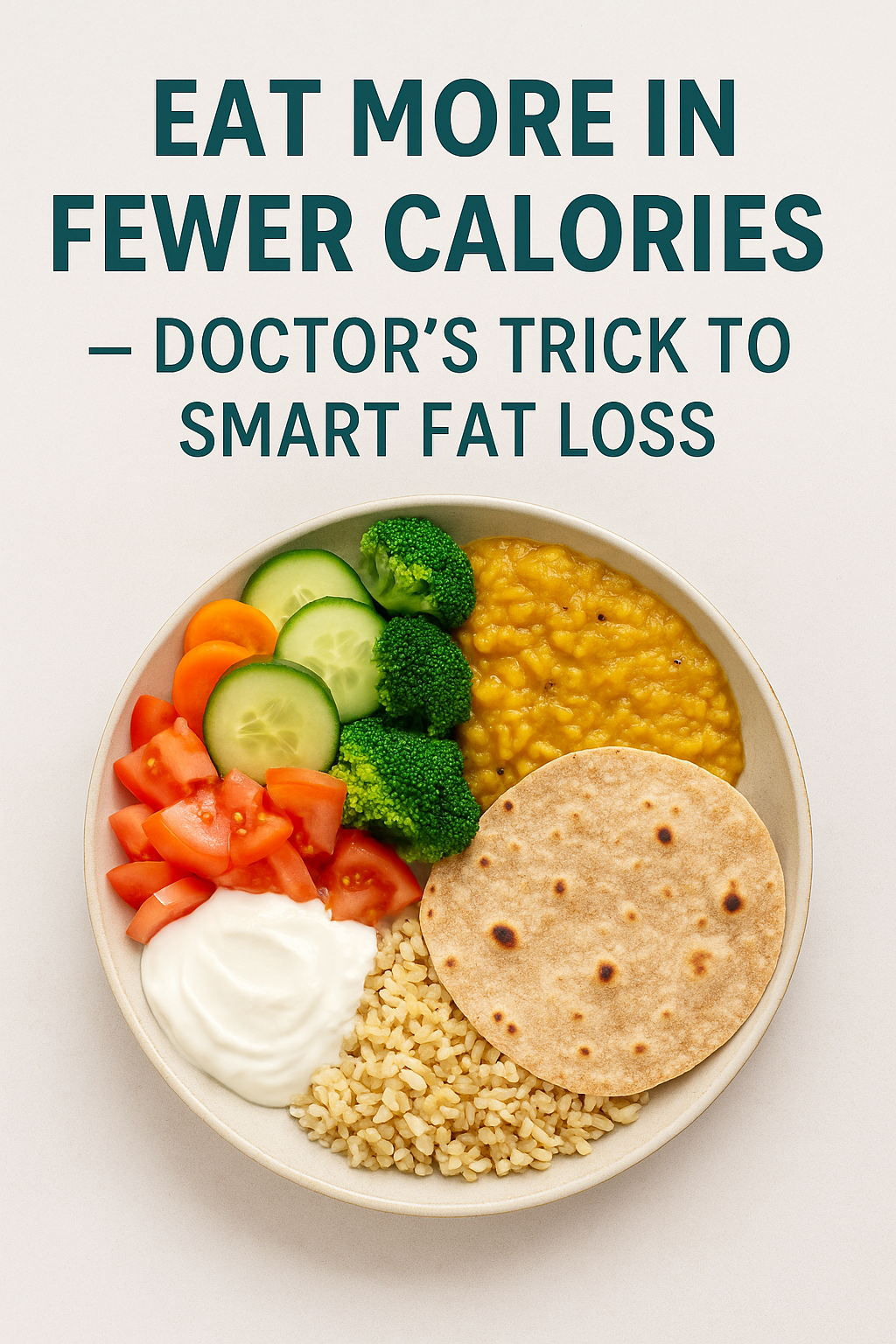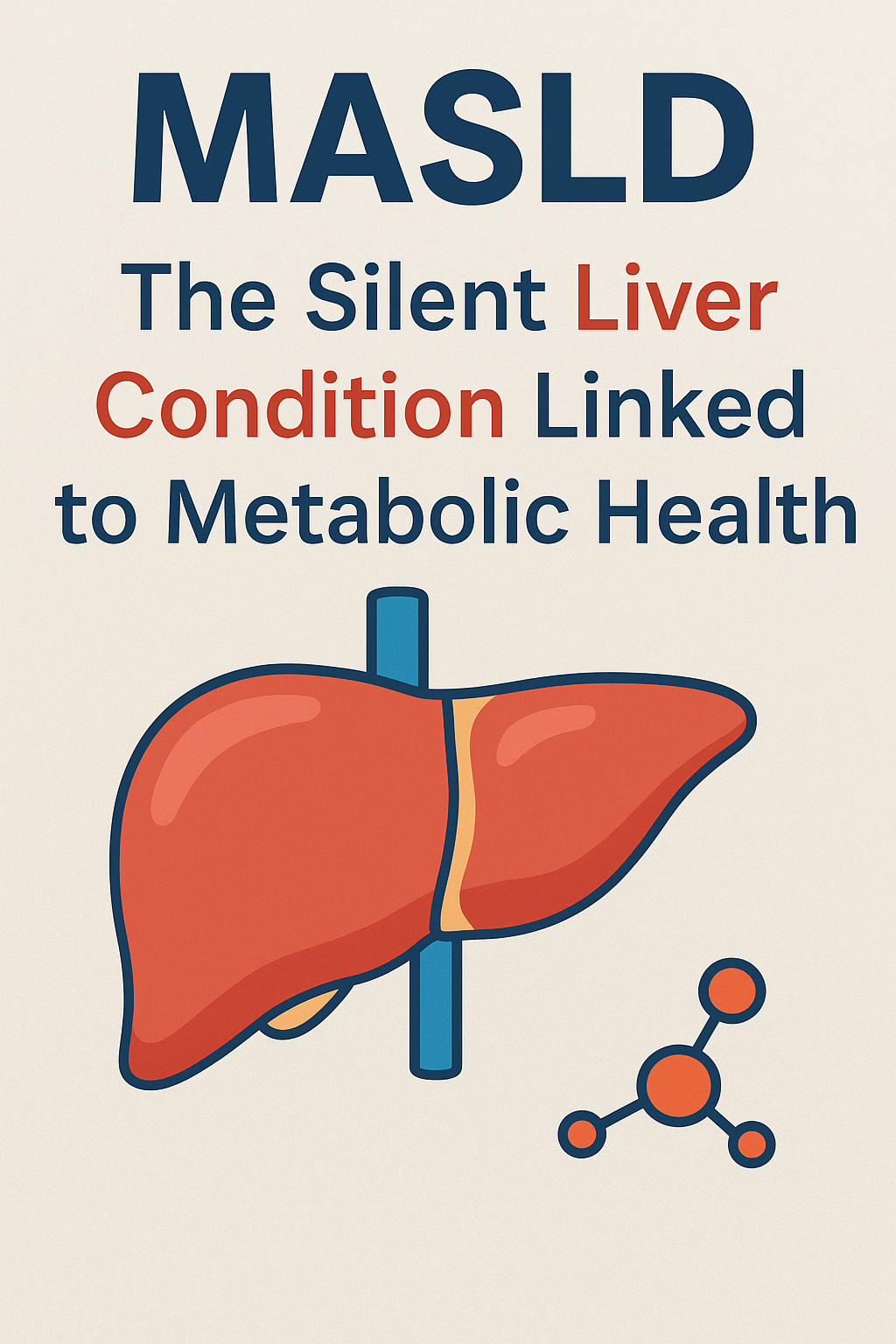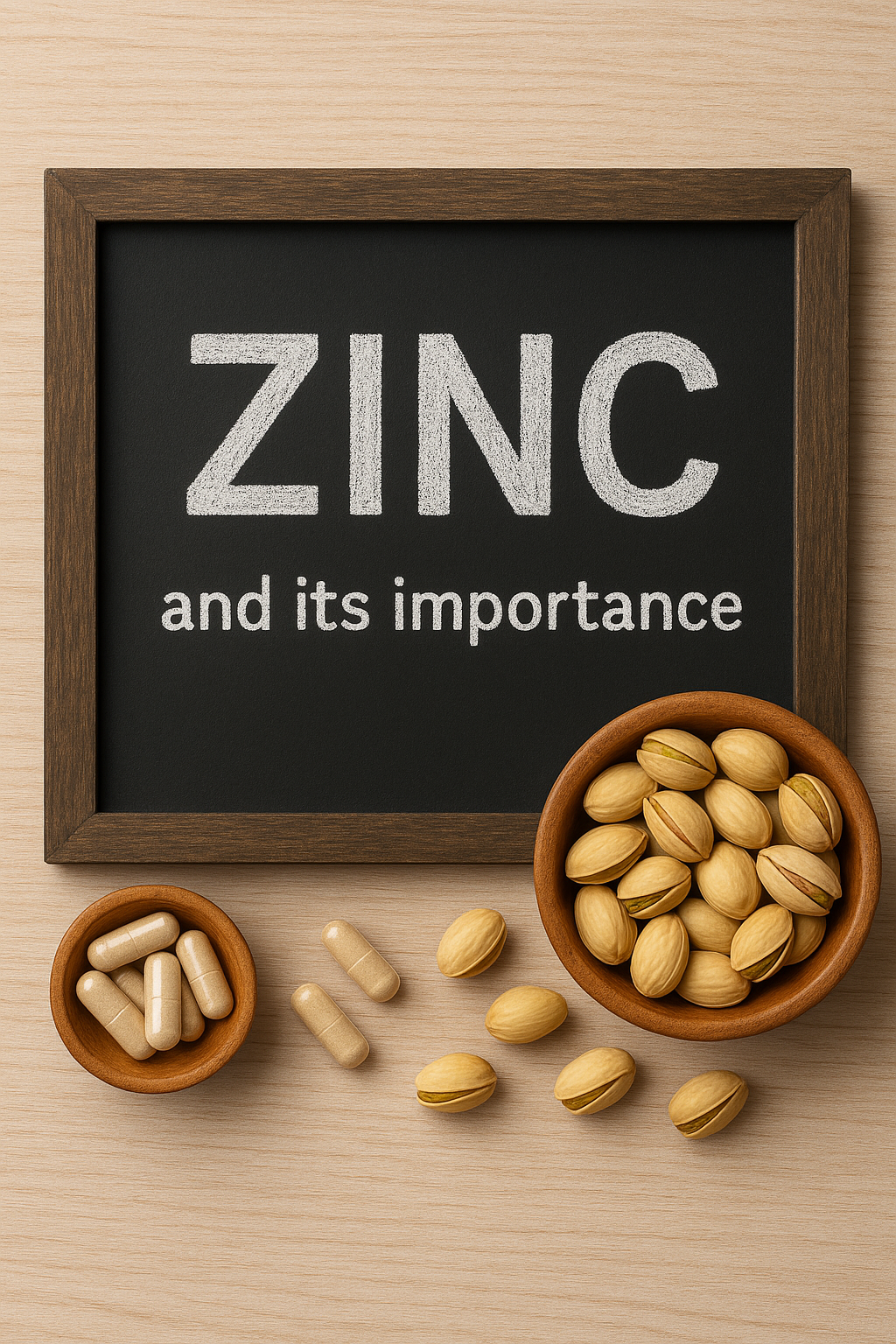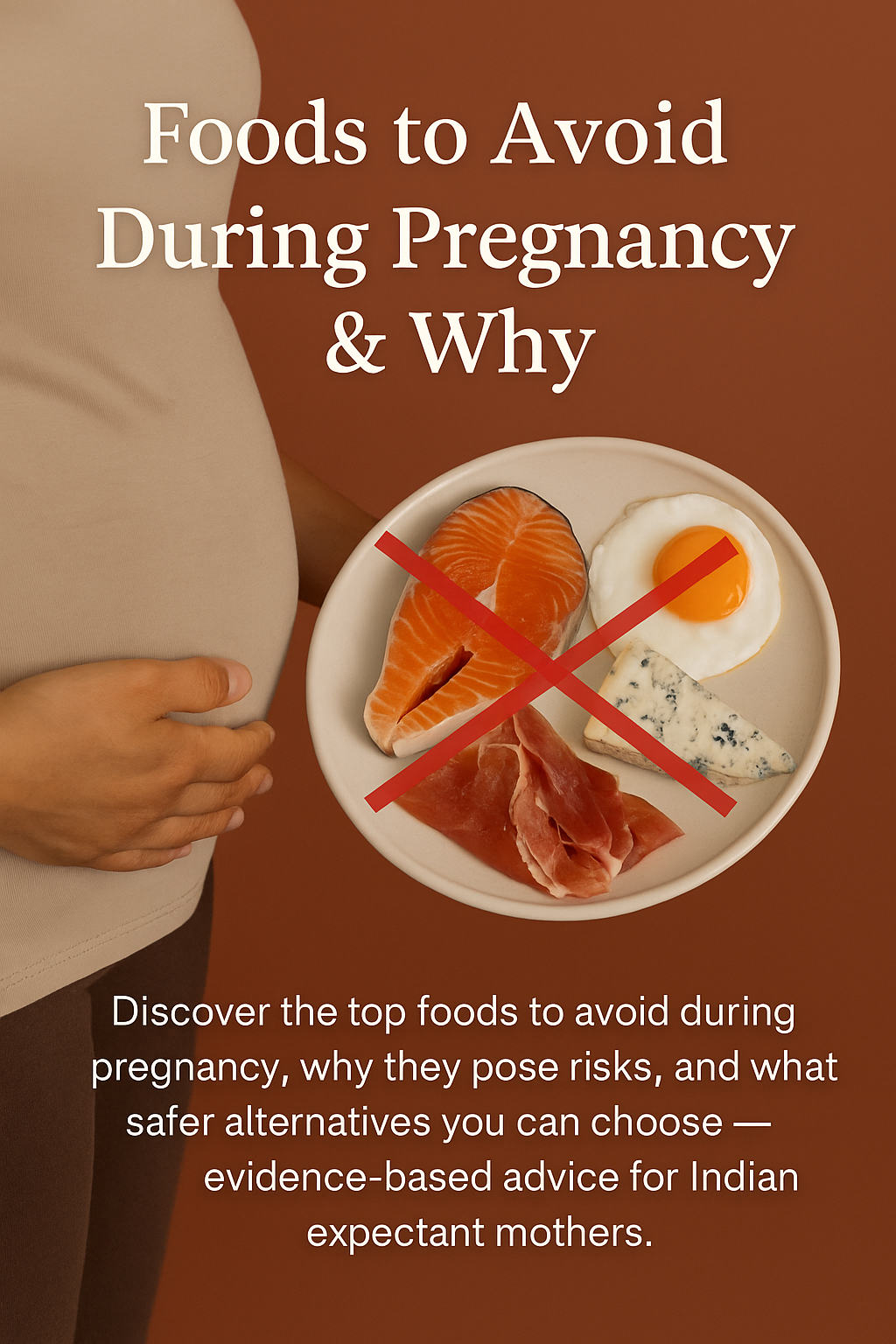🌿 Introduction
Imagine eating big, satisfying meals… and still losing fat. Sounds too good to be true?
It isn’t — if you understand the concept of calorie density.
The key isn’t always eating less — it’s eating smarter.
By choosing foods that give you volume, fiber, and nutrients without piling on calories, you can stay full, energized, and on track with your health goals — whether it’s fat loss, PCOS management, or postpartum recovery.
Let’s decode the science and the simple swaps that help you eat more food while consuming fewer calories.
🧠 What “Eating More in Fewer Calories” Really Means
Calories are simply a measure of energy.
Some foods are calorie-dense — high in energy for a small portion (like chips, sweets, fried snacks).
Others are low in calorie density — meaning you can eat a large portion with relatively few calories (like fruits, vegetables, and soups).
So the goal is to fill your plate with more low-calorie-density foods that stretch your stomach, trigger fullness hormones, and prevent overeating.
🥗 1. Choose Volume-Rich, Water-Rich Foods
Water adds bulk without calories.
That’s why foods like cucumber, watermelon, soups, and stews make you feel full faster.
Examples:
-
Replace 1 cup fried rice (300 kcal) with 1.5 cups vegetable-loaded stir-fry with tofu (200 kcal).
-
Add clear soups or salads before main meals — studies show this reduces total intake by 20–25%.
🥦 2. Focus on Fiber
Fiber slows digestion, balances blood sugar, and keeps you full longer.
Smart swaps:
| Instead of | Try |
|---|---|
| 2 white rotis | 2 multigrain or jowar rotis |
| White rice | Brown rice or vegetable dalia |
| Potato chips | Roasted chickpeas or makhana |
High-fiber Indian foods:
Lentils (dal), chana, moong, oats, psyllium husk (isabgol), fruits with skin, and millets.
🍳 3. Add Protein to Every Meal
Protein increases satiety and prevents muscle loss during weight loss.
Example:
-
Add paneer, Greek yogurt, tofu, sprouts, eggs, or dal to each meal.
-
Mix your breakfast with protein sources — besan chilla with paneer, or oats with Greek yogurt.
💡 A protein-rich breakfast reduces snack cravings later in the day.
🥣 4. Replace Refined Carbs with Whole Foods
Refined foods (like white bread, noodles, and biscuits) pack calories but no fibre. They have a high glycemic index, and they spike your blood glucose real fast. Whole foods, in contrast, digest slower and keep you full.
Simple swaps:
-
White bread → Sourdough or wholegrain toast
-
Instant noodles → Millet khichdi or vegetable upma
-
Bakery snacks → Homemade chilla or sprouts bhel
🫐 5. Eat More “Nutrient-Dense” Snacks
You can eat a large volume of snacks if they’re based on fruits, veggies, or air.
Examples:
-
Air-popped popcorn (3 cups ≈ 90 kcal)
-
1 bowl cucumber + tomato chaat (80 kcal)
-
Roasted makhana (1 cup ≈ 100 kcal)
-
1 apple + 1 tsp chia seeds (100 kcal)
🌈 The trick: more crunch, color, and fiber — fewer oils and sugars.
🥛 6. Watch Out for Liquid Calories
Fruit juices, coffees, smoothies, and soft drinks sneak in hundreds of calories.
Liquids don’t trigger the same “fullness” signals as solid food.
Choose instead:
-
Plain water with lemon or mint
-
Coconut water
-
Green tea or black coffee without sugar
-
Vegetable smoothies with fiber intact
🥕 7. Make Half Your Plate Veggies
A simple visual cue:
👉 Half your plate = non-starchy veggies (salad, sautéed veggies, soup)
👉 One quarter = protein (dal, paneer, fish, tofu)
👉 One quarter = complex carbs (roti, brown rice, millet)
This one plate principle lets you eat more food while naturally reducing total calories.
🌰 8. Add Healthy Fats — but Mind the Quantity
Fats are essential for hormones and nutrient absorption — but even healthy fats are calorie-dense.
Ideal daily use:
-
2 tsp cold-pressed olive or mustard oil
-
3–4 whole nuts + 1 tsp seeds
-
½ avocado occasionally
🕒 9. Eat Slowly and Mindfully
When you eat fast, your brain doesn’t register fullness quickly.
Chew slowly, savor flavors, and use smaller plates — studies show this can reduce intake by up to 20%.
🧩 10. Plan Your Meals
When you plan ahead, you avoid last-minute calorie traps.
Batch-cook dals, roast makhana or nuts in advance, and keep Greek yogurt or fruits ready.
🩺 Consistency beats restriction. Sustainable changes help you lose fat without losing your mind.
💬 Final Takeaway
You don’t need to starve to lose fat — you just need to outsmart calorie density.
By focusing on volume, fiber, protein, and hydration, you can enjoy satisfying meals, stay full, and still maintain a calorie deficit.
Small tweaks like switching to high-volume foods and mindful eating will help you feel lighter, healthier, and more in control of your plate. 🌿
🔬 References

Akanksha Sharma
Dr. Akanksha Sharma, Head Writer and creator of AtoZ of Pregnancy, is dedicated to empowering women, parents, and families through 360-degree knowledge. She and her team provide evidence-based advice to guide families through pregnancy, parenting and beyond.






